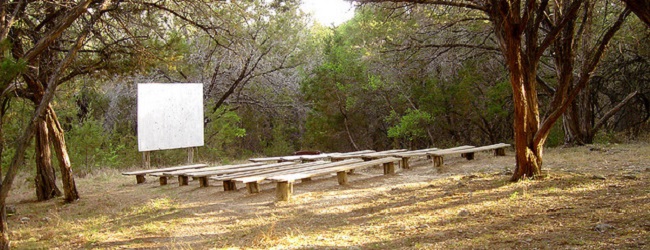Pupils have to take in and retain a huge amount of information, so it’s important to make sure that their memories are up to the job. T&L and MFL lead practitioner at Archbishop Holgate's School Robert Watson gives five great techniques for this task.

Memory is an odd thing. I teach languages, and I notice how tough students can find it to remember and retain things. I know I’m not alone and that this isn’t just confined to my subject area, as I do teaching and learning work across the curriculum. So, what weird and wacky ways can help to improve students’ memory?
You never know where the next educational innovation will come from, and it’s therefore important to understand how schooling works in different countries. Rachna Kapoor, director at The Tutoring Expert, has assembled an infographic on the matter.

This is an infographic researched and created by The Tutoring Expert’s Rachna Kapoor, taking into account how education works in different countries.
Sun, sea, sand and student feedback. As relocations go, you can do a lot worse than Dubai. Liam Greenbank, teacher of IB Business Management & Economics at the Dubai American Academy, explains how he ended up going from grey Blighty to scorching UAE, and tells us about his experiences.

Choosing to become an international teacher is probably a more complex decision for most than it was for me. I was single, 25 years young and had been regretting for a number of years not travelling the world when I finished University. The cost of living in London was becoming more of a struggle than I had imagined, and I had also needed a change from teaching the English system. At the time I wasn’t enjoying the AS and A2 Business Studies courses on offer from certain examination boards, but I was lucky to get a brief taste of the International Baccalaureate (IB) a few years earlier when teaching in Liverpool. A taste I enjoyed.
Inset days are often criticised, with both teachers and parents finding them an annoyance. Jane Basnett, Downe House’s head of Modern Foreign Languages, tells us why Inset days need to be remoulded into something worthwhile.

September: So, the lovely, long, hot summer is over. Well, maybe not so hot, but lovely and long anyway. You have rested, recuperated and regrouped. You have done lots of reading for pleasure and reading for work and, if you are lucky, the two will have coincided. You have taken down old displays and planned for some exciting, interactive new ones. Your classroom is ready for action. Lessons are planned and you have had time to let the creative juices flow and design some great new resources. You personally are raring to go, as you have managed to get some down time over the holidays. A few weeks cycling through the Loire, or camping somewhere on Britain's beautiful coastline or perhaps a staycation taking in all the sites you never get round to seeing. Yes, you are ready to come back and face the new term. All you have to do now is get through those first days back, including the dreaded Inset.
Given that this is a transformative time for British education, many teachers will be looking to gauge how the new curriculum will affect their work. Tim Handley, Year 5 maths and ICT lead at Norfolk’s Woodland Primary Academy, looks at the specifics of the upcoming curriculum, and discusses how maths teachers can best go about getting the most from it.

The Department for Education (DfE) is concerned that England is lagging behind other countries in maths, calling for us to be more ambitious in this area of our children’s education, following the example set by higher performing countries such as Singapore. It is certainly true that the Programme for International Student Assessment (PISA) league tables show the UK is behind global rivals. In international tests taken by 15 year olds, we are failing to make the top 20 in maths, reading and science. In a recent report on Mathematics, it was highlighted that British 15 year olds’ mathematics skills are now more than two whole academic years behind 15 year olds in Shanghai. England's Education Secretary Michael Gove said that since the 1990s, test performances had been "at best stagnant, at worst declining”.
Given that most people enjoy watching movies, it’s often tempting to just ‘put on’ a film. However, while the age of pupils will restrict screening opportunities (Junior schools will likely continue to miss out on Goodfellas), there are still a huge amount of films that students can really sink their teeth into. What is the moral subtext of The Iron Giant? What can Casablanca tell us about narrative? Trained cineaste Nicole Ponsford gives her advice on how to make the most of a flick in the classroom.

Are you one of those teachers who “puts” on a film on the last day of term? Are you? Well if you are, I am afraid you will not be getting a Christmas card from me. As a film teacher, I like to teach film. I think one issue that causes film to have a bad name in education is that many adults see film as escapism and therefore do not know how or why it needs teaching. They associate it with their childhood and they do not see that moving image / film/ the movies are an art form.
I have recently returned from Junior School Leidschenveen, the British school in the Netherlands. It is an international school with a huge diversity of children from all over the world, and has an incredibly creative ethos. Myself and my colleague Laura Brown have had the pleasure of running 3 one week long creative projects over the last 18 months. The most recent demonstrated a core belief of mine: Real learning needs to engage and motivate - it needs to be experiential and immersive. It needs to matter to the learner - and to the teacher.
Mobile learning devices are great for classroom use, but to get the most out of them, lots of educators believe in taking tablets outside. With British weather now entertaining the idea of being pleasant, teacher and outdoor learning-expert Juliet Robertson gives her thoughts on how best to get the most out of this field.

The idea of using digital technology outdoors continues to produce an interesting array of feelings from educators. The spectrum seems to range between love and loathing, freedom and fear, or curiosity and curtailment. For me, the lure of a tablet being part of an outdoor activity is the untapped possibilities that we have yet to discover. The value of experimenting and exploring the world around us through a digital eye is worth the time invested. It’s not because I want to see a child glued to a screen outside. It's because I know for some children a mobile device provides alternative ways of exploring the environment which may spark a life-long interest.
Jane Basnett has written articles previously on how she’d go about implementing digital strategist position. In her third article on the subject, she discusses how to best get the position rolling effectively.

So what next in my hypothetical journey as a school's digital strategist? As a school we are beginning to embrace our TeachMeets and increasingly more staff are beginning to contribute to the meetings. The time slots have been fine tuned so that everyone can attend, no one feels left out, and those staff who previously may not have felt easy about sharing ideas can now be, at least, part of the process. The staff blog is up and running and through this medium we are now reaching the majority of the staff room.

A community-driven platform for showcasing the latest innovations and voices in schools
Pioneer House
North Road
Ellesmere Port
CH65 1AD
United Kingdom